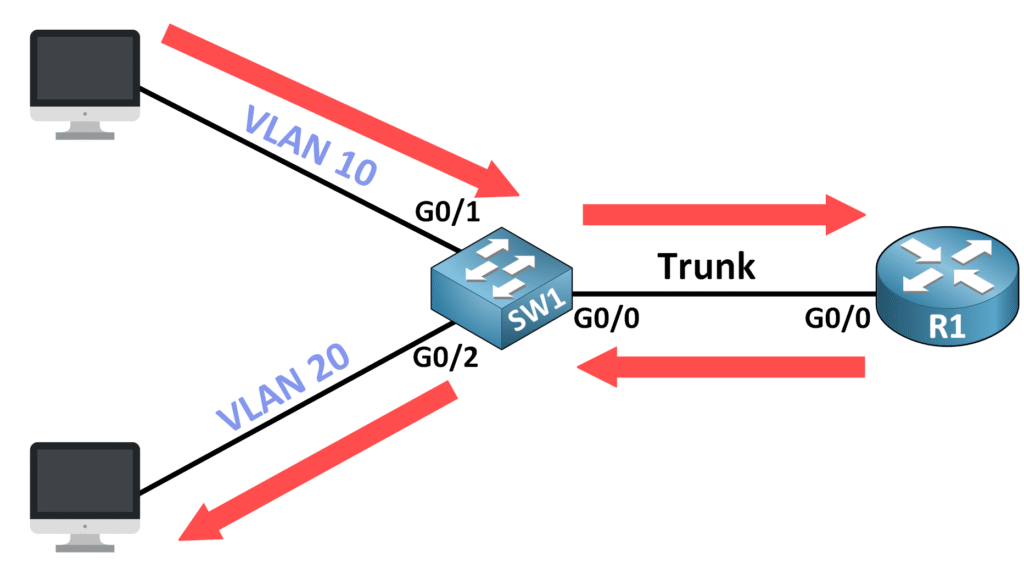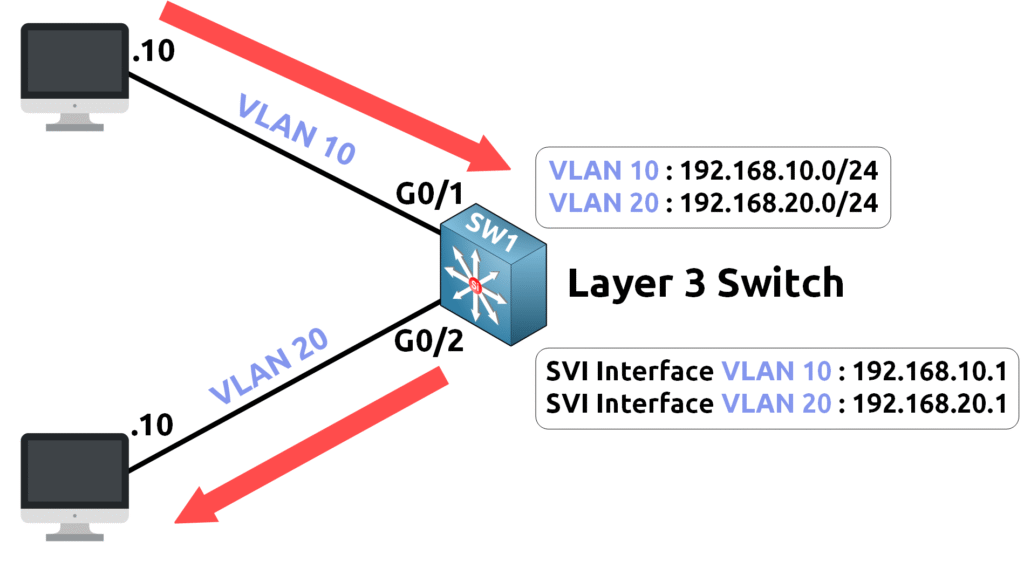InterVLAN Routing
1. What is Inter-VLAN Routing?
By default, devices within different VLANs cannot communicate with each other. Inter-VLAN Routing allows devices in separate VLANs to exchange data by using a router or a Layer 3 switch to forward traffic between VLANs.
Imagine a scenario where a device in VLAN 10 needs to send traffic to a device in VLAN 20. Without Inter-VLAN Routing, these devices remain isolated. However, with proper configuration, their traffic can be routed, ensuring seamless communication across VLANs.

Inter-VLAN Routing Methods
There are two main methods to enable Inter-VLAN Routing:
Router-on-a-Stick

Router-on-a-Stick is a method where a single physical router interface is configured with multiple subinterfaces, each corresponding to a VLAN. The router routes traffic between VLANs using these subinterfaces, each assigned an IP address as the VLAN’s default gateway.
✅ Advantages:
- Simple and cost-effective, as it only requires one router interface.
❌ Disadvantages:
- The single interface may become a bandwidth bottleneck in high-traffic environments.
SVI Inter-VLAN Routing
A Layer 3 switch can perform routing internally using Switch Virtual Interfaces (SVIs) instead of relying on an external router. Each VLAN is assigned an SVI, which acts as its default gateway, facilitating direct inter-VLAN communication within the switch.

✅ Advantages:
- Faster routing since traffic does not need to leave the switch.
- Scalable and reduces latency.
❌ Disadvantages:
- Requires a Layer 3 switch, which can be more expensive than a Layer 2 switch with a router.
Comparison of Inter-VLAN Routing Methods
| Method | Description | Advantages ✅ | Disadvantages ❌ |
|---|---|---|---|
| Router-on-a-Stick | Uses a single router interface with subinterfaces for each VLAN. | Simple and cost-effective setup. | Limited by single interface bandwidth. |
| SVI Inter-VLAN Routing | Routes directly between VLANs using SVIs, without needing an external router. | Scalable, efficient, and low latency. | Requires Layer 3 switch hardware. |
Choosing the Right Method
- For small networks, Router-on-a-Stick is an affordable and straightforward solution.
- For larger networks, SVI Inter-VLAN Routing provides better performance and scalability.
Next Steps
Now that you understand the methods of Inter-VLAN Routing, let’s move on to Router-on-a-Stick Configuration, where you’ll learn how to implement this method step by step!
